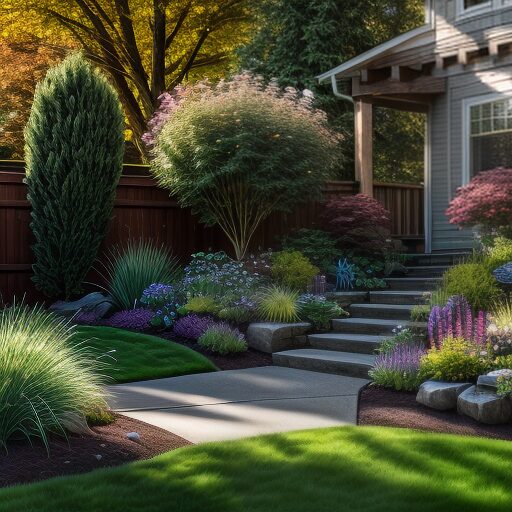Introduction: Native Plants
Native plants play a crucial role in maintaining ecological balance and supporting local wildlife. They are well adapted to the specific climate and soil conditions of their native regions. However, when we introduce these plants into our home landscapes, they often face different challenges. In this article, we’ll explore the details why and how to water native plants, even though they are naturally suited to the environment.
Understanding the Context
Not Quite “Native” Conditions
While native plants thrive in their natural habitats, it’s essential to recognize that the conditions in our gardens and yards may not mirror their native ecosystems. Here are a few reasons why:
- Planting Practices: Landscapers or homeowners typically plant native species. However, these plants may not have grown from seedlings as they would in the wild. Instead, they are transplanted, which can affect their establishment.
- Soil Conditions: Our garden soils might differ significantly from the nutrient-rich, well-draining soils found in forests, meadows, or floodplains. Native plants may struggle if the soil lacks essential nutrients or has poor drainage.
- Proximity to Buildings: We often place native plants near buildings or structures. As a result, they experience altered microclimates, reduced rainfall, and increased heat. These conditions can impact their water needs.
Why Water Native Plants
Early Establishment
The First Two Summers Matter: During the initial years after planting, native plants require extra attention. Adequate watering during the first two summers is vital for their establishment. Here’s why:
- Root Development: Native plants need time to develop strong root systems. Regular watering encourages deep root growth, ensuring their long-term survival.
- Survival Challenges: Transplanted native plants face stress due to changes in soil, light, and water availability. When you water native plants it helps them overcome these challenges.
Considerations for Watering Your Landscape
1. Observe Your Plants
- Visual Signs: Keep an eye out for wilting leaves, yellowing, or drooping stems. These indicate insufficient water.
- Soil Moisture: Check the soil moisture regularly. Stick your finger into the soil near the plant’s base. If it feels dry, it’s time to water.
2. Water Native Plants Deeply and Infrequently
- Deep Roots: Water deeply to encourage roots to reach deeper soil layers. Frequent shallow watering can lead to surface-rooted plants.
- Mulch: Apply a layer of organic mulch around the base of native plants. Mulch helps retain moisture and regulates soil temperature.
3. Adjust Based on Season and Weather
- Summer Heat: During hot summers, increase watering frequency. Native plants may need more water to withstand high temperatures.
- Rainfall: Reduce watering during rainy periods. Monitor weather forecasts and adjust accordingly.
4. Use a Smart Contoller
- There are irrigation controllers that are connected to your Wifi that have access to up to date precipitation information. Use them! The last thing you want is to run an irrigation system during a downpour.
- Smart Controllers will automate step 3.
Summary
In nature, plants face challenges such as disease, insects, and natural mortality. To best support your native plants, consider supplemental watering. When you water native plants that a little extra care goes a long way in helping them thrive in our human-altered landscapes. Learn more about Sustainable Landscape Design!
Click here to go back to our Blog Page
Click here to go back to our company Home Page
Contact Us for more information!

